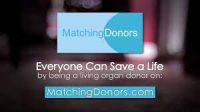
By Devoreo Bell
December 26, 2015 (San Diego) -- It is well documented that America has had multiple conflicts involving race relations, specifically with law enforcement over the past couple of years. Now there is reason to believe that there are similar problems with healthcare.
Dr. Camara Phyllis Jones, MD, MPH, PhD, President, American Public Health Association, spoke at the “Racism: Let the Cure Begin” event at the Jacob Center, specified how racism can be exhibited in healthcare and medicine. Dr. Jones is considered the preeminent voice addressing racism as a threat to the health and well-being of the nation.
Racism is defined as a system (of power) structuring opportunity and assigning value based on the social interpretation of how one looks, which is what we call race.
Disparities in healthcare and medicine show up based on the residence (urban neighborhoods versus well to do ones) of the hospitals or health clinics in the following ways:
1) differences in the quality of care received within the healthcare system
2) differences in access to health, including preventive and curative services.
3) differences in life opportunities, exposures, stresses that come with living in your neighborhood on top of the health problems.
Dr. Jones lists three ways that racism shows itself in regards to healthcare:
1) unfairly disadvantages individuals and communities
2) unfairly advantages other individuals and communities
3) saps the strength of the whole society through the waste of human resources.
Dr. Jones adds, there are three levels of racism besides the actual concept of it:
-
Institutionalism: different access to the goods, services, opportunities of society. Examples of this are housing, education, employment, income, medical facilities, clean environment plus access to information, resources as well as a voice;
-
Personally mediated racism: creates differential assumptions about the abilities, motives and intents of others by “race,” differential actions based on those assumptions, thus comes prejudice and discrimination. In addition, things are like police brutality, physician disrespect, shopkeeper vigilance, waiter indifference and teacher devaluation;
-
Internalized racism: the acceptance by the stigmatized races of negative message about their own abilities and intrinsic worth. Examples of this are self-evaluation usually negative, resignation, helplessness or hopelessness.
Dr. Jones and Gregory E. Knoll, Esq., Executive Director at The Legal Aid Society of San Diego, both provided solutions for solving the problems with racism.
Dr. Jones says there are three important steps for anti-racism to take place:
1) name racism (note it when you see it)
2) how is racism operating here
3) organize and strategize to act
Knoll goes further by referencing to the white privilege concept that prominently discussed by minorities in this country.
Knoll mentions, “White privilege is invisible, it’s normal and not to be discussed,” then Knoll continues with his point and says, “make white privilege visible and not to be blind.”









Recent comments